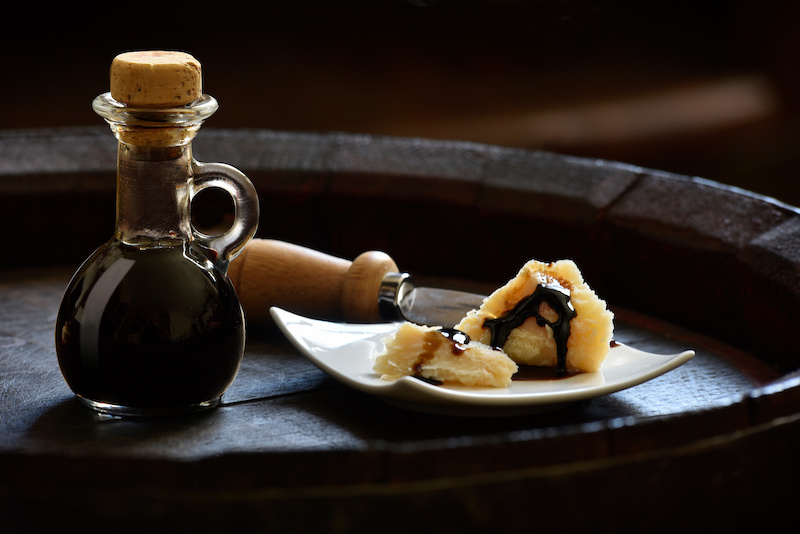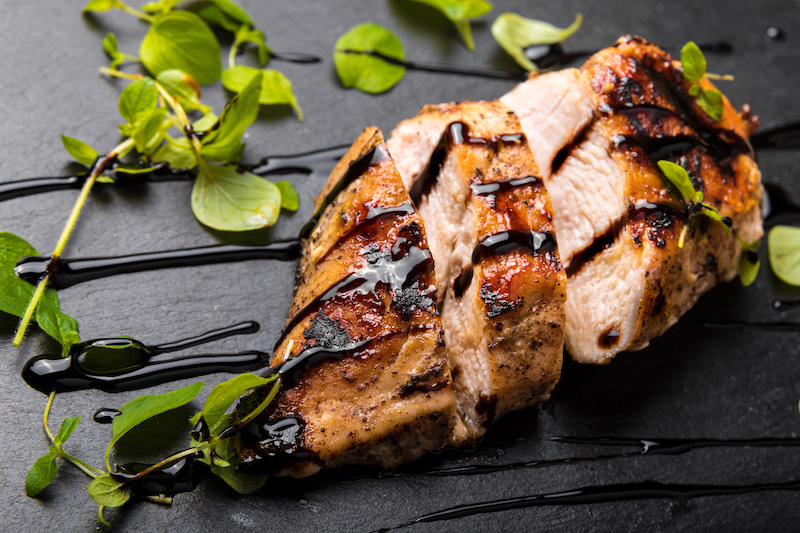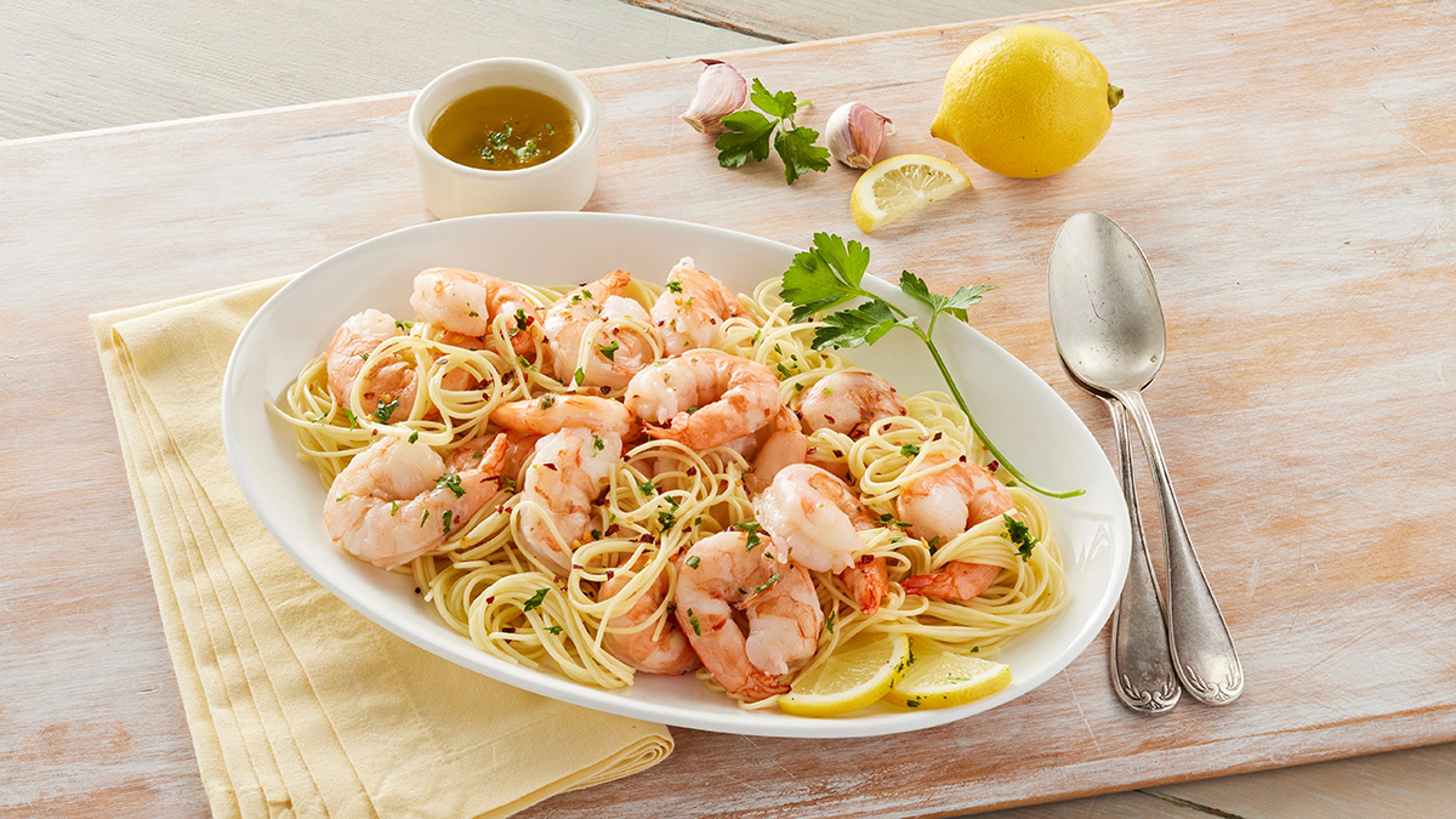Balsamic Vinegars: The Kings of Condiments
Nothing raises your kitchen game like the deep, complex, evocative flavor of a quality balsamic.
May 03, 2023
Some cooks keep only one or two kinds of vinegar in their kitchens. Others fill a shelf with bottles—champagne, apple cider, sherry, rice, red wine, white wine and "black."
Yes, those are all vinegars.
Still, balsamic is king.
When people move into a new home, balsamic vinegar tends to be at the top of the list of kitchen staples. Rent a vacation pad with a kitchen and the spartan, nearly empty cupboard contains a bottle in balsamic, next to the oil, for salad dressings.

Yet balsamic vinegar has fabulous uses far beyond salad.
Note that there are two kinds, the one you know and white balsamic, which is made from white grapes and is less sweet. You might prefer it if you like your wine dry and white. Buy from us and the grapes are organic, with no sulfites added.
To gain new appreciation of your pantry must-have, read on.
A Rose By Any Other Name....
The name sounds vaguely herbal. You might think of balsa, the wood; perhaps balsamic vinegars are aged in balsa barrels? Not so.
Ours, which comes from the sun-drenched hills of Spain's southern Andalusia region, is aged in oak barrels for 24 months. Might the name have to do with balsams, a category of aromatic tree saps? (To quote the poet Longfellow, "the sweet Balsmic exhalations of the pine"). Vinegar can be sweetish, but the name doesn't refer to a sap.
According to the Oxford English Dictionary, the term "balsamic" has connoted healing, soothing and balmy weather. As a noun, it was once a synonym for medicine and the vinegar may have been drunk long ago as a "tonic"—promoting health. Along those lines, a viral TikTok phenomenon in spring of 2022 had people downing "healthy Coke," a mix of balsamic and sparkling water that reportedly tastes similar.
We won't vouch for the taste or health claim, but modern science does tell us that balsamic vinegar is high in antioxidants.
How It Is Made
It all begins with sweet late-harvested grapes, pressed with the juice, skin, seeds and stems to make what is called grape must. That product is cooked until concentrated by about half, and then allowed to ferment on its own for a few weeks.

Next, it is aged in a series of barrels, each smaller than the last. The barrels may be made of various woods, sometimes switching between different woods to add flavors.
Every year, some vinegar is bottled from the smallest barrel, and vinegar is moved between the barrels as well. Sherries, ports and brandies emerge from a somewhat similar process.
The key is that the vinegar becomes more thick and syrupy over time. As with wine, older vintages, which can be aged as long as 25 years, command higher prices.
White balsamic vinegar blends must from white grapes with white wine vinegar. It is heated at a low temperature. That preserves the light color and less-syrupy taste.
"But I Don't Put it On Salad!"
Perhaps your family is addicted to blue cheese salad dressing and the balsamic vinegar is only for guests. No worries, consider a non-salad idea. The general principle is that it is great for marinades of all kinds and can be a sophisticated way to add sweetness, for example on Brussels sprouts.
You can try any of these ideas with either white balsamic or dark. Dry wine lovers—you're no longer left out. White balsamic may have just the right mix of tang and sweet for you. Explore!

Bring a "wow" factor to a roasted chicken with simply balsamic vinegar, Dijon mustard, fresh lemon juice, garlic and olive oil.
Try it in your barbecue sauce. Add tang in a glaze for salmon or shrimp (in fact, this might work well with people who tend to spurn seafood).
Put balsamic and basil in a strawberry daquiri and your party is sophisticated!
Cook it down into a syrup and pour it over any dish of berries or even ice-cream. Another approach with desserts is even easier. Mix the berries with balsamic vinegar and sugar and let them sit until the berries are softened. Put them on top of Greek yogurt or pound cake. The technical term for softening berries in liquid is to macerate. It sounds painful— but trust us, no one will suffer.
Bottom line: balsamic vinegar immediately elevates mundane, simple flavors to a sophisticated and memorable peak. Long live the king!







